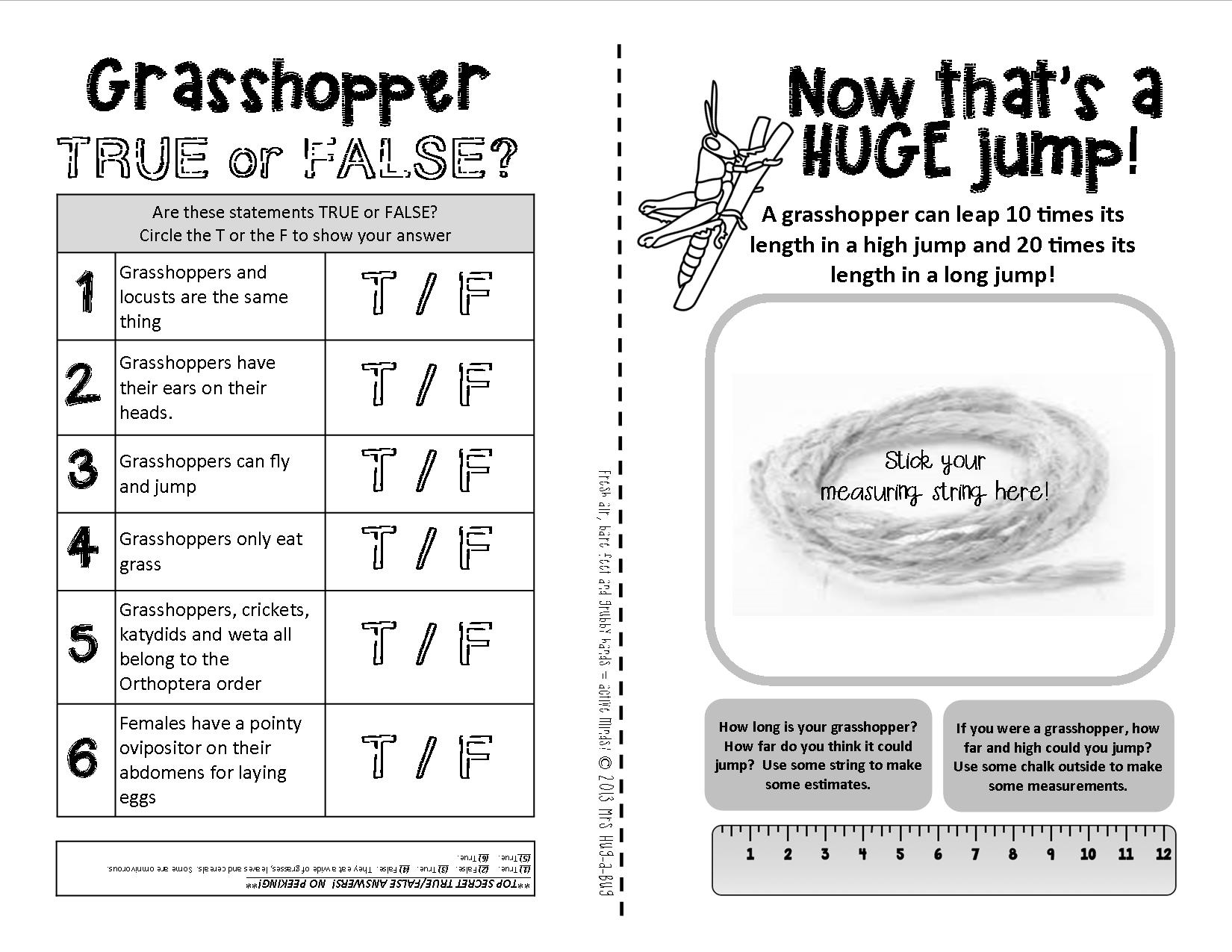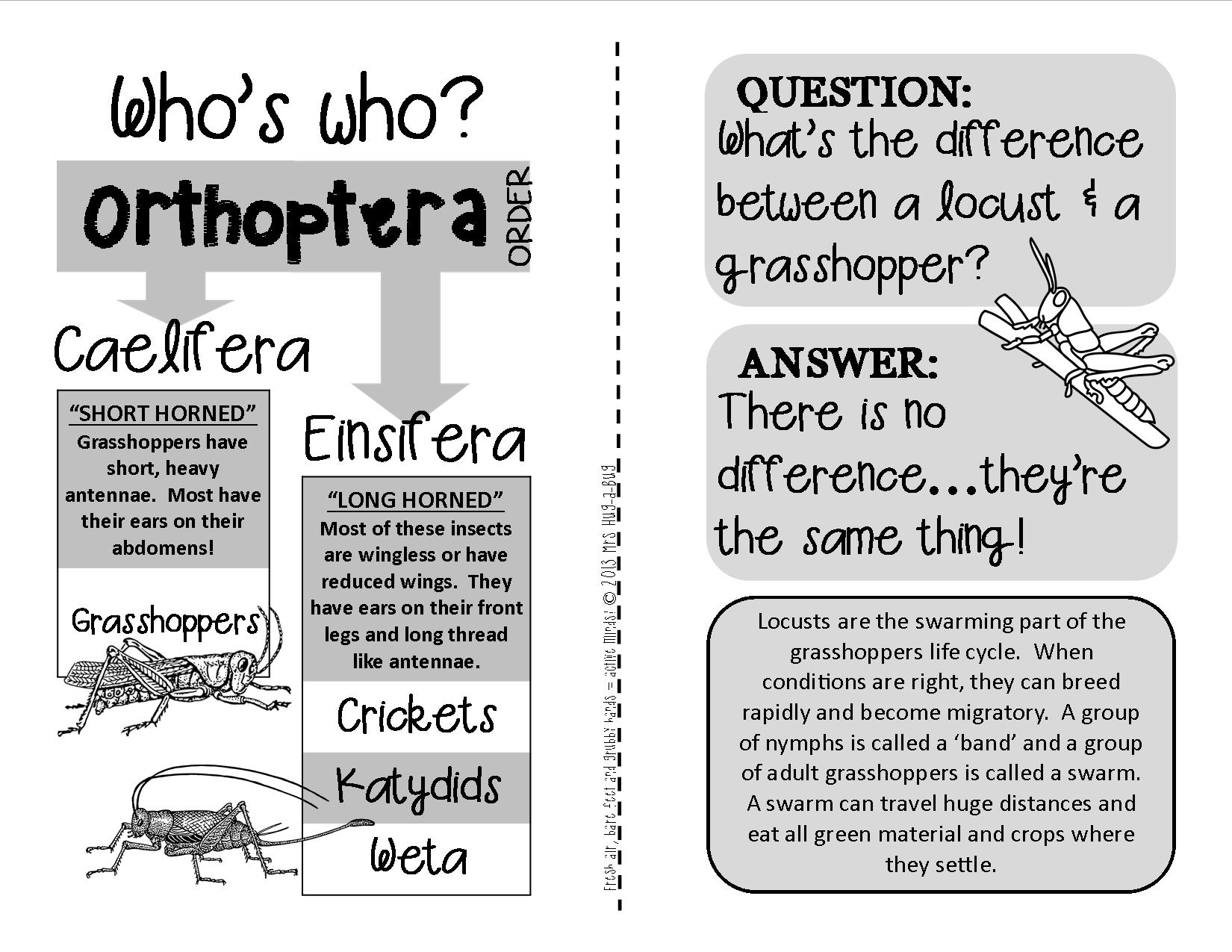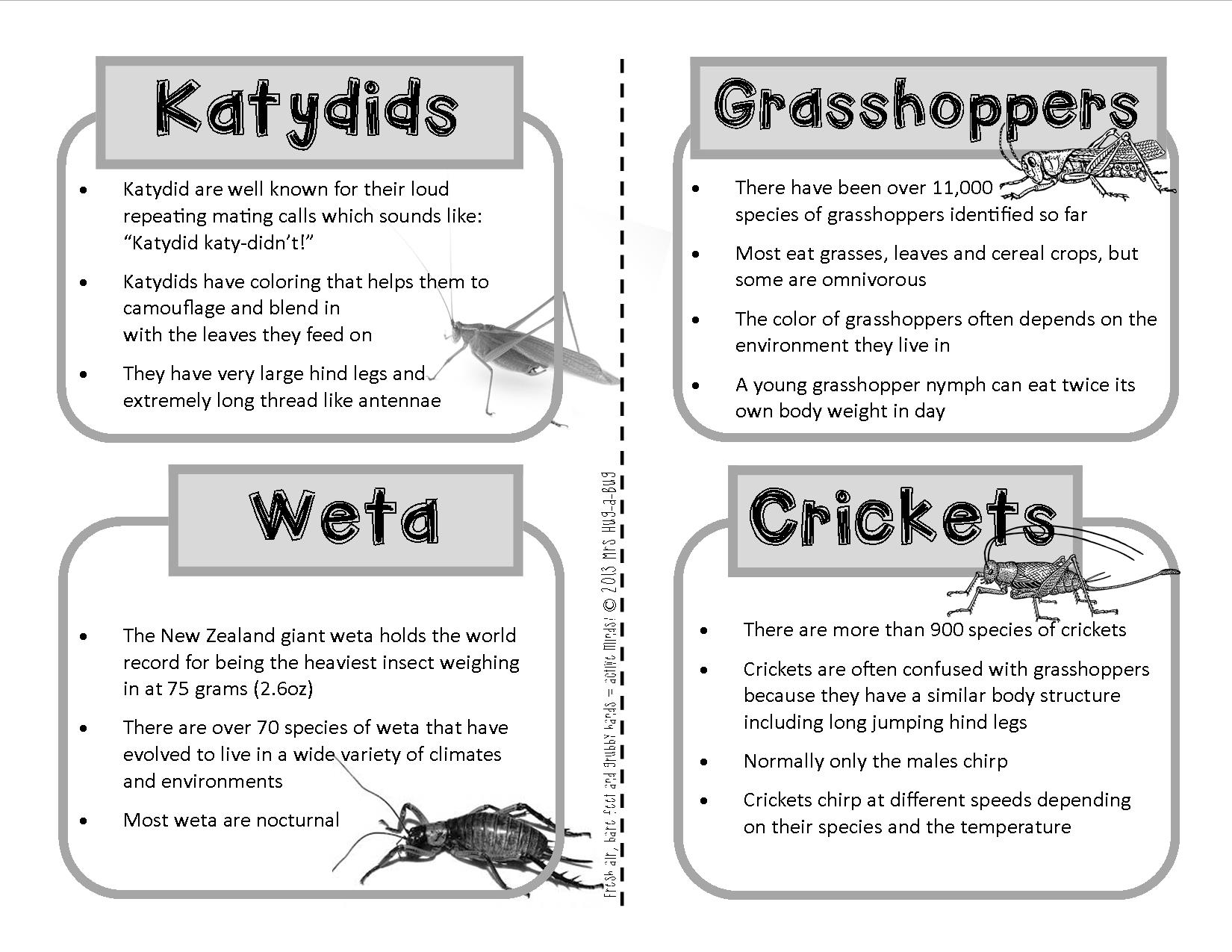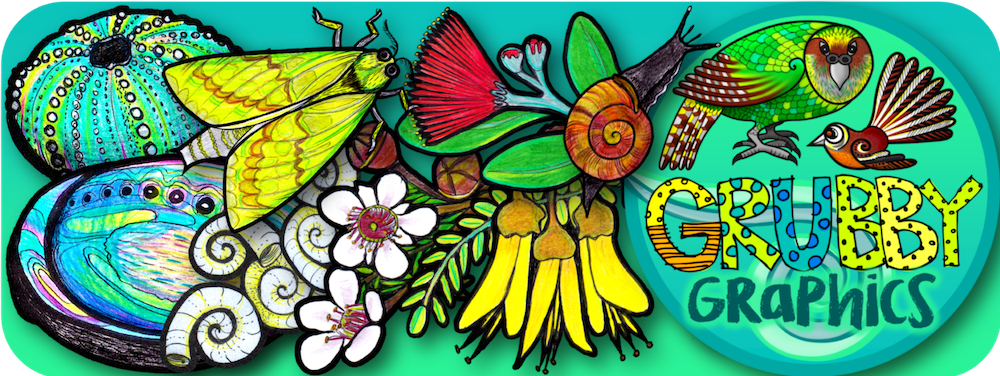Description
Can you imagine having your ears located on your belly or knees?! Grasshoppers and crickets don’t have to imagine, because that’s exactly where they are!
This 48 page ‘fun and facts’ mini booklet is designed to immerse you in all thing celebrating the amazing grasshopper and its orthopteran friends (Crickets, katydids and weta).
Included are:
• Several beautiful close up photographs of weta to help you get up close and personal to this fascinating insect…..
• Grasshopper lifecycle sequencing sheets (black and white + color)
48 page grasshopper greatness mini booklet ~ page topics include:
• Grasshopper True or False questions (and answers)
• Use string and rulers to make grasshopper jumping measurements (a grasshopper can leap forward 20 times its own length – how far can your grasshoppers jump? If you were a grasshopper, how far could you jump?)
• Illustrate and sequence the life cycle of the grasshopper
• Use a magnifying glass to study and sketch your insect (pages for legs, abdomen and antennae)
• Who’s who? (Diagram explaining exactly where grasshoppers, crickets, katydids and weta all fit into the Orthoptera order)
• Grasshopper facts in numbers (how many species have been named so far; what size is the smallest grasshopper in the world etc.)
• YUM! Cricket and grasshopper food facts from around the world
• How do they make that noise? (Description and explanation about the difference between how grasshoppers and crickets make noise + how they hear)
• Label the external anatomy of a grasshopper
• Selection of grasshopper coloring sheets
• Add the vowels to complete the Orthopteran themed words
• What colors can you see on your insect with a magnifying glass? Fill in the color palette
• Interesting facts about grasshoppers, crickets, katydids and weta (did you know that a young grasshopper nymph can eat 20 times its own body weight each day?)
• Orthopteran word find
• Q: What’s the difference between a grasshopper and locust? A: There’s no difference!
• A selection of coloring pages
• How would you spell the sound that crickets and grasshoppers make? Listen carefully and record.
• Cricket and grasshopper singing sounds (Stridulating and crepitating – have a go at making your own grasshopper or cricket noise using an old comb and some card!)
• Make a life size sketch of your insect
• Grasshopper acrostic poem template
• Create an illustration to match the old tale of ‘The Ant and the Grasshopper’
• Silly grasshopper jokes! (Q: What do you call a bug that jumps over cups? A: A glasshopper!)
• Mr or Mrs? Is your insect male or female? How to tell the difference
• Did you know grasshoppers were around before the dinosaurs?
• What predators do grasshoppers have?
• What does ‘knee high to a grasshopper’ mean?
• Did you know that it’s popular to keep crickets as pets in some parts of the world? What would you need to put in your insect’s container to keep it happy and comfortable while learning about it?
• Grasshopper camouflage coloring! Add some camouflaged insects to the picture
• 10 grasshopper themed challenges (e.g. Can you act out the life cycle of a grasshopper? Write a fictional story to explain why grasshoppers are so good at jumping; Read the locust chapter in “On the Banks of Plum Creek” by Laura Ingalls-Wilder (the Little House Series) Share your thoughts with the class, etc.)
• What Orthoptera species do you have living in your local area? (Recording sheet)
• Record they key words you’ve learned about this topic
• Use a camera to zoom in and take a close up picture of your insect

















Reviews
There are no reviews yet.